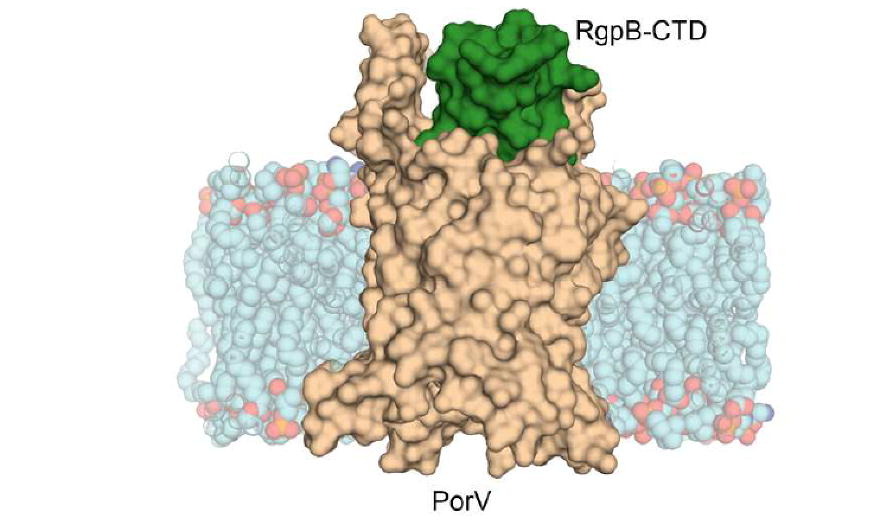In our latest publication, we present a structural model of a PorV:RgpB-CTD complex from Porphyromonas gingivalis (P. gingivalis). P. gingivalis is a gram-negative oral anaerobic pathogen and is one of the key causative agents of periodontitis. P. gingivalis utilises a range of virulence factors, including the cysteine protease RgpB, to drive pathogenesis and these are exported and attached to the cell surface via the type IX secretion system (T9SS). All cargo proteins possess a conserved C-terminal signal domain (CTD) which is recognised by the T9SS, and the outer membrane β-barrel protein PoV (PG0027/LptO) can interact with cargo proteins as they are exported to the bacterial surface. In collaboration with the groups of James Garnett and Mike Curtis in the Centre for Host-Microbiome Interactions of the Faculty of Dental, Oral & Craniofacial Sciences at King’s College London, we combined machine-learning based modelling and molecular dynamics simulations with solution nuclear magnetic resonance (NMR) spectroscopy and biochemical analyses to provide the first structural insight into CTD recognition by the T9SS. We also showed how the conserved motifs in the CTD ar ethe primary sites that mediate binding. In PorV, interactions with extracellular surface loops are important for binding the CTD, and together these appear to cradle and lock RgpB-CTD in place. This work provides insight into cargo recognition by PorV but may also have have important implications for understanding other aspects of type-IX dependent secretion.
Full reference: Ben Dorgan, Yichao Liu, Sunjun Wang, Joseph-Aduse Opoku, Sara B.-M. Whittaker, Mark A. J. Roberts, Christian D. Lorenz, Mike A. Curtis & James A. Garnett. “Structural model of a Porphyromonas gingivalis type IX secretion system shuttle complex.” Journal of Molecular Biology (2022) 434 (23), 167871.

